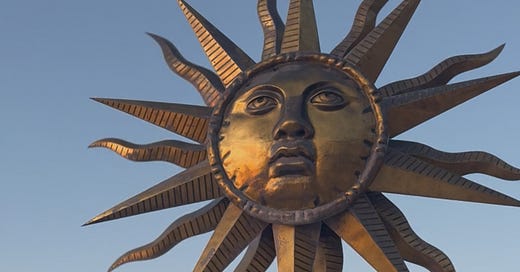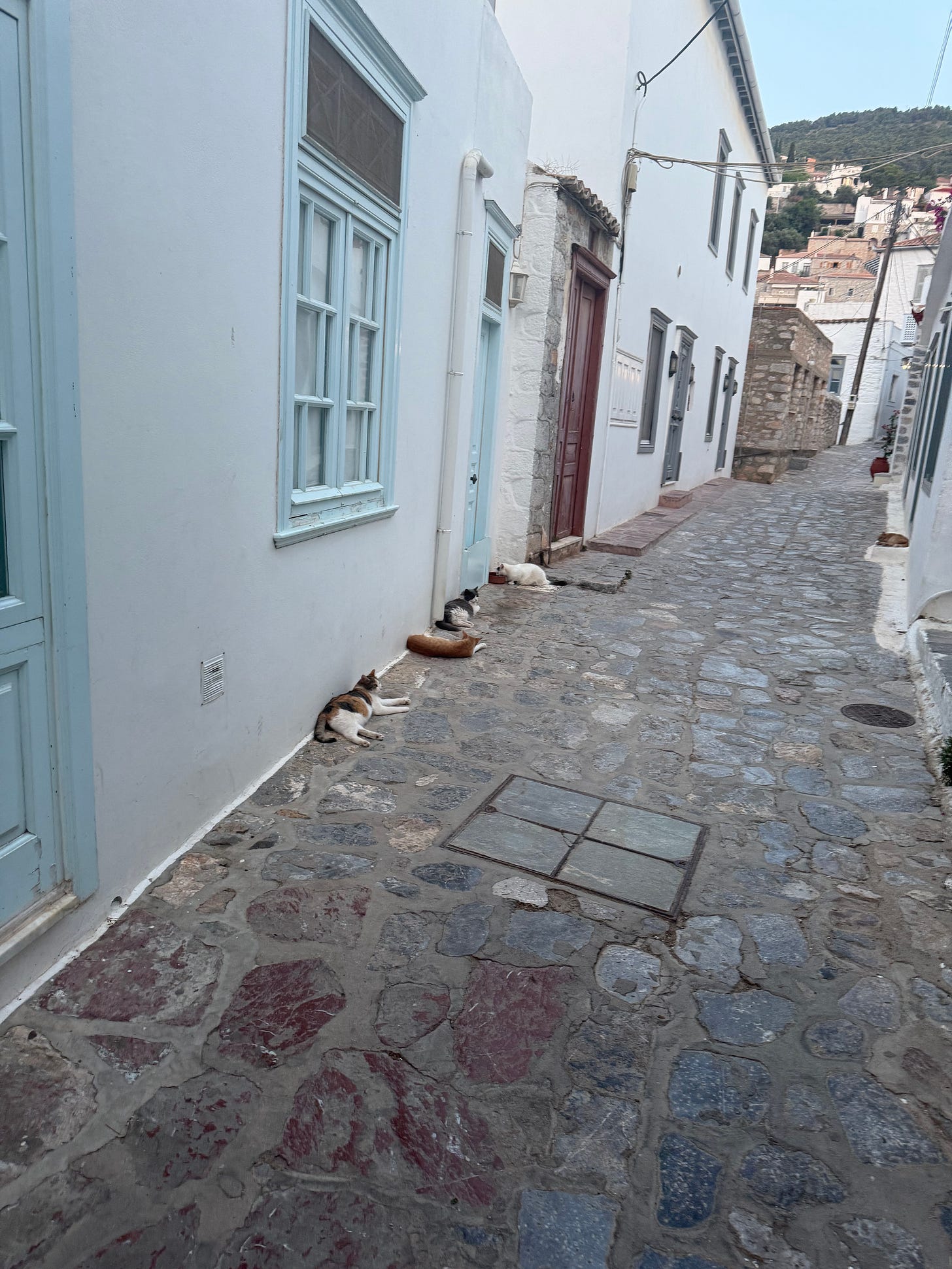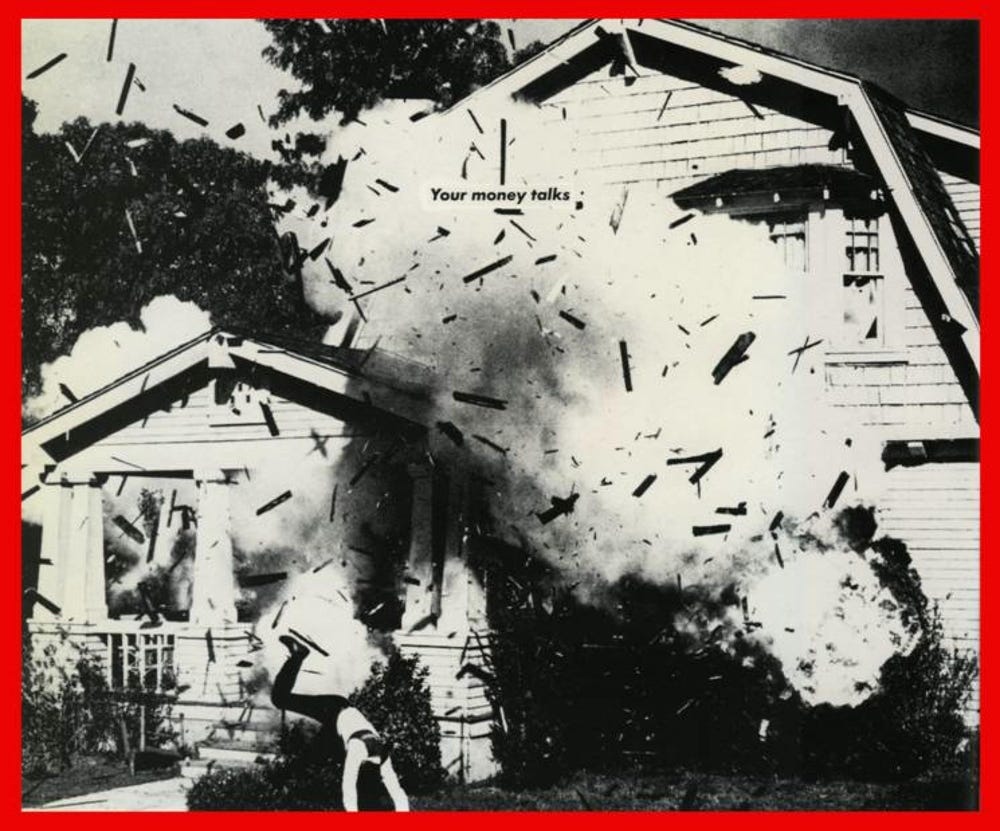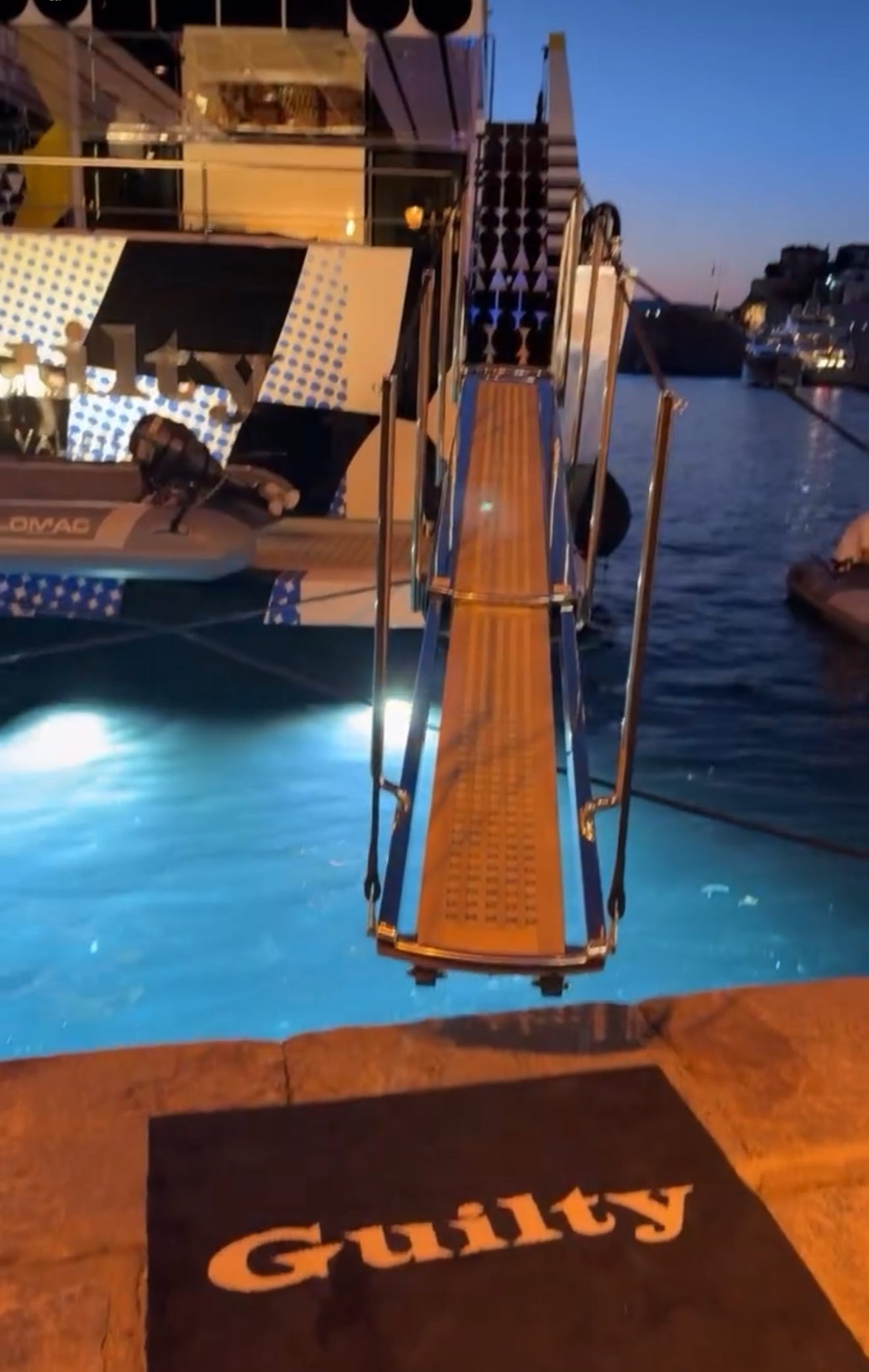It’s a friday afternoon and I’m writing this looking out over the blue water of Hydra. The sun is coming down on the Greek islands and on the last of the art travels of the summer. The art world tends to move in packs, and after Basel a lot of that same world heads to Hydra hosted by one of the old school art patrons, Dakis Joannou.
It’s my first time in Hydra. I’ve dreamed about it since I was a kid listening to my dad’s Leonard Cohen CD and wondering about this isolated bohemian literary island. But it’s not my first time attending an event that revolves around a big patron. I was lucky enough to attend the Two x Two charity event in Dallas before Cindy and Howard Rachofsky hung their jerseys in the Dallas rafters next to Dirk Nowitzki’s. I even plan to host my own event welcoming friends and strangers, artists and art lovers next February.
This week’s news came with the death of another patron, Leonard Lauder, and articles asking if this marked the last of the great patrons. Even more recently, news about the future of the Glenstone museum has me questioning what a mega patron can and should be. Still I can’t help but wonder: if it really it is nearing the end of the last great benevolent billionaire arts patrons, maybe it’s because we shouldn’t be depending on them in the first place.
Maybe it’s a mistake to place our hopes for the future of art in just a few hands and then expect patrons to “support the arts” out of obligation. Perhaps it’s time for a world of art filled with people who are there because they want to be. Hopefully it will be one which doesn’t just depend on the guilty benevolence of a few, but instead one which is participated in and supported by many more art lovers.
There is the oft repeated trope now that younger people won’t want to collect art, “they are more interested in experiences.” This is bizarre on a number of levels. First of all there has never been a time when most people (or even most wealthy people) were art collectors. Throughout history those with the means to collect or be patrons have always been “more interested in experiences.” Even the majority of the super rich have always been more interested in buying vacation houses or rocket ships or whatever else. Despite this the number of art buyers has only increased with time, and yet it’s still way lower than it could be.
Young people in art, just like in home ownership, are clearly going to be more interested in ephemeral experiences while the physical resources are hard to come by and hoarded in a few hands. This is true of houses, where millennials “prefer to rent” while the cost of home ownership is prohibitive. And it’s true in art, where new buyers are immediately met with an art world world that is opaque and guarded, and where the best works are hoarded and the best opportunities are explicitly reserved for longstanding VIP’s. If the art world makes itself difficult to be a part of, who wouldn’t rather just spend their money going on vacation?
Recently I’ve been sharing the stories of my experiences collecting art on social media. One of the challenges I’ve had with sharing is that despite the fact that I share the process to make the art world more approachable, the numbers and amounts are far from it. Invariably when I share the process of buying (or attempting to buy) an artwork someone comments “for that price you could have bought several emerging artworks and supported more artists.” And of course, they’re right.
The thing is: I’m not buying art primarily to “support artists.” Neither is anyone else who is doing it with any regularity- not Joannou or Rachofsky or even Lauder. People buy art because they love it. They buy a painting because they love that painting and want to live with it and maybe even share it with the world so that others can appreciate it too. I hope that as many of the (good) artists as possible are able to make a living from their work. I’m just one person with a limited budget, so I support artists by buying the artworks I love and can afford, and by donating as much art and as much money as I can afford to the museums and causes I believe in.
Supporting an individual artist is a byproduct, and a great one, but if one was doing it purely out of charity it’d make a lot more sense to support art schools, museums, homeless shelters, mental health wards, in fact there are a whole host of causes I’d rather donate to than to enrich Jeff Koons or George Condo. Joannou is “a great patron,” but make no mistake, he hosts these artists at Hydra because he likes their art.
Somewhere along the line “the way art works” deviated from the other mediums of music, film, even fashion, and the language of elite patronage became dominant. No one thinks that people listen to music “to support musicians.” They listen to whatever music they feel like listening to and in the end this supports musicians too. No one buys clothing to do a designer a favor, of course, people buy the clothing they want to wear and can afford. Yet somehow the idea became that art should be bought out of some kind of detached guilt by robber barons as a way to pay a bit back to society from their pillaged ill gotten gains.
But where does that leave the rest of us, you know, those of us that love art but aren’t guilt stricken slumlords or war criminals? Do we get to buy the art we like, rather than the art we feel like we owe a favor? And should we be buying the art that someone else wants us to support, while the world’s wealthiest buyers just buy whatever they like anyway?
The article about Leonard Lauder being the last of the great patrons quotes dealer David Nash:
“Everyone I’ve spoken to noted that he was one of the last great, serious collectors,” said Nash, who sold paintings by Braque and Picasso to him. “Inside America, I don’t see people like that.”
This, it’s worth pointing out, just isn’t true. Mr Nash just means the people he knows. There are many “great serious collectors” that I’ve met, they just aren’t ones he knows because he hasn’t made an effort to engage with them. And there could be many more, if the art world opened up and encouraged them.
The article continues:
it’s unclear who in the U.S. is able or willing to collect at his level. With the proliferation of private museums, fewer wealthy patrons support public institutions with the zeal and breadth of Lauder.
It becomes clearer what exactly they mean by “level” of patronage as the article goes on. Many major museums were built initially as private collections, and even the public ones have often been dominated by both the collection and the individual will of individual mega donors. This gave each of them tremendous power, like Robert Lehman, founder of Lehman Brothers and chairman of the board of the Met, who demanded an entire wing in his name . The article is making clear that while our major city museums being beholden to the power of individual donors is not ideal, perhaps its even less ideal to have these mega donors create their own private museums. But why wouldn’t it just be an additional pleasure to have a private museum of a great collection in a city right along with the public museum?
Which brings us to the billionaire owned private museum Glenstone. Kenny Schachter reported this week of the possible breakup of the founders Emily Wei Rales and Mitchell Rales, and what it would mean for this museum’s future. He also points out that the museum is open only by appointment and doesn’t allow kids under 12! Seriously, what kind of museum explicitly isn’t for kids? But at least it’s free, unlike the Bourse de Commerce in Paris, where you have to pay the world’s richest man 15 euros to see his art collection, despite him getting a break from the city to rent the building for 50 years at a below market rate.
To me this is all burying the lede, although it turns out the lead happened a year ago and I (like a lot of the public I’d imagine) just missed it. Glenstone, a museum which has a 4 billion (!) dollar endowment, and is supposedly “a charity to support public and educational exhibitions of art,” (according to the Washington Post and Washington City Paper) very openly used union busting tactics against its employees as part of negotiations to avoid raising their pay.
According to the press, Emily Wei Rales, who ironically also used to work for Mitchell Rales before marrying him, sent out employees anti-union propaganda herself. One had a “Union FAQ” saying things like:
There is no pay or health or retirement or other benefits contributions by an employer during a strike. Employees would have to pay for 100% of the cost of their own health insurance.
Also keep in mind that the reason unions strike is to bring economic pressure on the employer to agree to the union’s demands. But of course Glenstone is free to all visitors, and the museum is not dependent on any revenue that comes from being open. In the event of a strike, the real losers would be the public.
Honestly you can’t make this stuff up. She is literally saying that because Glenstone, a billionaire owned, multi billion dollar endowed museum that supposedly exists to serve the community, does not need to make a profit, they are warning their workers that if they try to strike in order to get paid a better wage for their work, the economic pressure won’t get to the museum because the owners don’t need the money anyway. This would be in contrast to, say, the Louvre, where the workers are also so overworked and underpaid that they decided to strike for better working conditions. In simpler terms, the Rales are telling their own employees that they will negotiate against them to keep the wages they rely on to feed their families as low as possible, while warning them fighting back with collective economic pressure won’t work because the Rales are so rich they don’t need the money anyway.
If they don’t need the extra few dollars of low wage work they’re squeezing from their museum staff, why would the Glenstone owners be fighting the union?
Here’s the explanation from the article:
Emily and Mitchell Rales also FedExed letters to their employees’ homes, encouraging them to vote against unionization, according to the Washington Post. “It is our sincere hope that you give due consideration to voting NO and keeping the Teamsters out of this special place we’ve built together,” the letter, signed by both Emily and Mitchell, says.
In the end, Glenstone workers voted to unionize anyway. And Ms Wei Rales continues to be honored as a great patron and supporter of the arts. In a trend we continue to see, successful artists are treated as if they are the only “workers” in art, and the wealthy patrons that buy from them are seen as generous supporters or fair bosses even if they go out of their way to avoid supporting the actual workers in art: their own museum, gallery, and art handling employees. This leads to odd scenarios like Glenstone being praised as patrons of Babrara Kruger- a political artist known for challenging unjust power structures- while they actively work against their own low-wage employees struggle for fair pay.
And of course it’s not the only example of a “generous billionaire arts patron” union-busting to avoid paying their museum workers fairly. As Schachter points out, the Marciano Foundation, the museum of the super rich art collectors that own Guess that sprung up for no particular reason in a city with at least three other major museums, decided they’d literally rather shut the entire place down rather than let their workers unionize for a fair wage. In fact, they didn’t even give their workers sufficient notice, and their workers sued them and won. This again from a foundation owned by billionaires that supposedly existed for the benefit of the community.
So if some of the great patrons are dying off, and others seem to be more self-serving than generous, where does that leave the future of art?
To me it’s clear that the future of art and collecting isn’t in guilt tripping people into buying artworks they don’t even like out of a sense of obligation, or to show off a brand name, or to be a VIP member of a club. And it’s not in hoping for the generosity of a single benevolent patron. Whether it’s the museum that exists to serve everyone or the working people that keep it running, needing to beg for support from someone at the top that holds the purse strings is good for no one.
I think the future of art is in getting many more people involved at all levels, not just a few at the top. It’s in letting more people know that they can buy art because they love it and because they are getting a fair price and putting their money into something great that might provide them both lasting value and fulfillment. To get the many new people involved that can support museums and artists, these new participants have to know that they can be an important part of the art ecosystem, not just a guest at the banquet of one of the few super rich patrons left who decides to share.












Really appreciated this. One thing I think doesn’t get discussed enough is how mega patrons don’t just influence institutions—they set the template for what collecting looks like. Collectors with means (not billionaires, but certainly serious buyers) are taught—explicitly or implicitly—to follow their lead.
But they’ll never get access to what the mega collectors buy. So they end up spending $90k on the same blue-chip prints or passed-over mid-tier paintings that every other affluent collector in every major city already owns. It’s aspirational mimicry that leads to homogenous, performative collections.
Meanwhile, artists, galleries, and university programs in their own cities operate in a kind of vacuum—not because of a lack of quality, but because no one is modeling intentional, locally rooted collecting.
I’ve been trying to address this in Dallas, where I run a gallery with a strong program and a truly visionary, diverse roster of artists. I see real potential to build an ecosystem that encourages intentional collecting and amplifies the talent already here. None of this needs to come at the expense of investment-minded collecting or what mega patrons bring to the table—but the model needs broadening.
Curious if you’ve seen this dynamic shift anywhere—or if you think there’s a way to start reshaping the template.
When working at a gallery, I found that some people who came through felt they didn’t fit the “profile” of what a collector should look like and were intimidated by the opacity of the art world and collecting in general. Another thing that was pretty common was people unwilling to “buy in”, and see the benefits of collecting art as opposed to other collectibles or experiences. Getting people excited about collecting and donating would solve a lot of problems across the for and non profit sides of the art world right now!